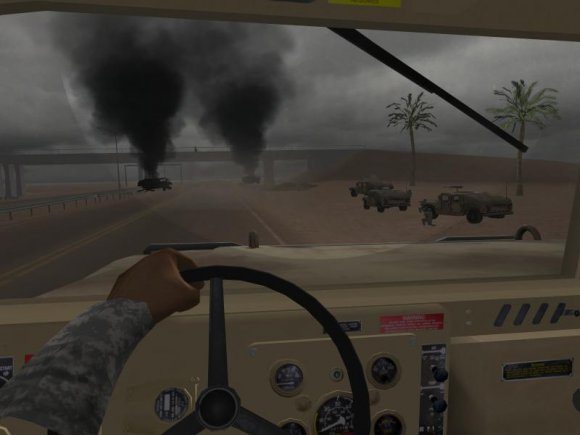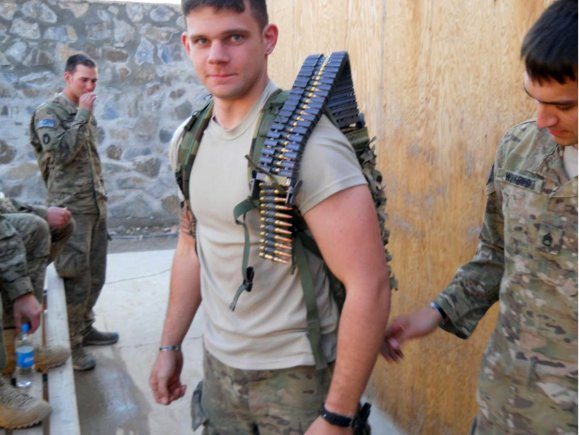With the possibilities of concussion, neurotoxin exposure and post-traumatic stress disorder among service members, the need for accurate and widespread assessment of brain function is critical.
An individual’s performance on standardized cognitive tasks can reveal the extent of injury, even when other signs and symptoms are not immediately apparent. This enables healthcare staff to start treatment earlier, monitor its effectiveness more closely, and make more accurate return-to-duty decisions.
Participants at a national workshop on the biological assessment of brain dysfunction held last spring discussed recent advancements in neurocognitive testing, including the use of virtual reality. The event was funded by the U.S. Army Medical Research and Materiel Command’s Telemedicine and Advanced Technology Research Center, or TATRC.
Workshop co-chair and TATRC director Col. Karl Friedl noted that cognitive assessment must become unobtrusive and even fun.
“If it’s fun, individuals will be more motivated and the results could be more accurate,” he said.
THE IMPORTANCE OF COGNITIVE TESTING
Dr. Jennifer Vasterling, chief of psychology at the VA Boston Healthcare System and professor of psychiatry at Boston University, presented an overview of cognitive abnormalities associated with post-traumatic stress disorder, or PTSD reactions. She explained that cognitive testing can illuminate specific functionally relevant difficulties so healthcare professionals can identify other problem areas, in addition to emotional symptoms, to target in treatment. She discussed exposure therapy as one example.
“We know that exposure therapy is effective in treating PTSD, but that it works better for some people than for others,” she explained. “What if cognitive impairment or, conversely, cognitive proficiency influences a person’s ability to benefit from the treatment? Exposure therapy requires recall of traumatic memories and the formation of new emotional associations with those memories.”
“Perhaps research on memory and other cognitive functions important to the process of change in this and other PTSD interventions could help us augment the interventions so they are more effective for people with a cognitive impairment,” she said.
For cognitive assessment, the military currently uses paper-and-pencil tests as well as the Automated Neuropsychological Assessment Metrics, or ANAM, computerized test. Workshop co-chair Dr. Robert Kane, project manager for the Neurocognitive Assessment Tool Program at the Defense and Veterans Brain Injury Center, shared findings related to concussion.
He noted the importance of cognitive tests, citing studies showing that such tests detected concussion effects in individuals even after they reported themselves to be symptom free. Kane said that computerized tests seem to provide more detail than traditional ones, thus illuminating different cognitive effects stemming from different types of concussion.
“An emerging pattern of evidence shows that loss of consciousness is a determining factor in the type of cognitive issues resulting from a concussion,” he added.
While the ANAM has been a helpful tool for gathering data in the military, some workshop participants felt that it needed additional research to back it up. This would be particularly important in advancing it as a standard measure that the civilian community might also adopt to evaluate cognitive functioning.
THE POTENTIAL OF VIRTUAL REALITY
Col. James Ness, the new director of the Engineering Psychology Program in the Department of Behavioral Sciences and Leadership at West Point, indicated he plans to develop a team of faculty and cadet researchers to examine and scientifically evaluate the ANAM.
“We’d also like to explore additions such as virtual reality, which is perfect for today’s video game generation,” he said.
Ness believes virtual reality, or VR, could have been a useful tool in the medical training he conducted during his recent deployment as command inspector general with the NATO Training Mission/Combined Security Training Command in Afghanistan.
Several at the workshop shared Ness’s enthusiasm about potential VR applications to cognitive assessment and training.
“Just as in a flight simulator, we can embed performance measures into the virtual situation,” said co-chair Dr. Robert Kane. “We need to explore what information could be captured that we might not capture otherwise.”
Dr. Thomas Parsons, director of the NeuroSim Laboratory at the University of Southern California’s Institute for Creative Technologies, is developing and testing VR assessment tools for return-to-duty decisions after brain or psychological injury.
With Soldier input, his team has recreated multi-sensory environments and situations from Iraq and Afghanistan, including patrolling in a Humvee or on foot, and witnessing varying levels of environmental stressors, such as improvised explosive device, or IED, explosions, rocket-propelled grenades, bomb blasts and insurgent gunfire.
“The beauty of VR is that it allows us to integrate standardized neuropsychological measures into interactive applications that approximate the real world of a military service member,” he explained.
The team has worked with other partners (military and civilian) to compare their test results with standardized paper-and-pencil tests as well as ANAM results.
“My focus is on validating this technique, working with both clinical and nonclinical populations, so it can become standardized and accepted as a way to add further information to the current tests we have,” Parsons said.
Parsons’ team is also using eye tracking, psychological measures, and physiological measures such as cardiovascular reactivity and EEG to refine the virtual environments. One goal is to discover the optimal intersection of performance and stress level–if the environment is not arousing or the cognitive task is too simplistic, then the user becomes bored and disengages.
On the other hand, if the environment is overstimulating and too complex, then the individual becomes overwhelmed and frustrated. Hence, the goal is to adapt the assessment relative to the user’s optimal performance.
Through this extensive testing and refinement, the Virtual Reality Cognitive Performance Assessment Test, or VRCPAT 1.0, has evolved into VRCPAT 2.0 for Adaptive Training. This tool is part of a stress prevention project in which a virtual mentor guides individuals through traumatic episodes pre-deployment, providing coping strategies that may lessen the emotional damage from soldiers’ actual experiences in theater. The next iteration, VRCPAT 3.0, is now in development for team cognition and Mobile Counter-IED Interactive Training.
In another application of the technology, Dr. Albert “Skip” Rizzo, associate director of the Medical VR Research group at the USC Institute for Creative Technologies, is using a Virtual Iraq/Afghanistan environment similar to that used for VRCPAT to deliver exposure therapy for combat-related PTSD. He noted that a 2008 meta-analysis (Parsons and Rizzo) found that VR outperformed traditional exposure therapy for phobias, while another study found that it led to greater improvement in post-9/11 PTSD symptoms than traditional therapy.
Rizzo’s and others’ initial pilot clinical trials have shown that therapy with Virtual Iraq may achieve better results than traditional therapy, with a lower dropout rate. These findings suggest that being immersed (safely and gradually) in a simulated stressful experience could be more effective, and perhaps more engaging and acceptable to those raised with video games, than simply asking the patient to imagine the scene.
However, Rizzo noted that randomized controlled trials would be needed to support this claim. Three such trials are ongoing.
Rizzo, lead investigator JoAnn Difede, and partnering investigator Barbara Rothbaum have recently begun a three-site randomized clinical trial of VR exposure therapy’s ability to reduce PTSD symptoms compared to traditional imaginal exposure therapy. The trial is also testing whether the use of D-Cycloserine, a medication that affects emotional processing in the brain, improves results of the therapy when taken during the exposure sessions. To better objectify the outcome measurement in this study, they are using a sophisticated “startle response” conditioning/extinction paradigm.
“The startle reflex is a good indicator of PTSD because it is often amplified in these individuals and fails to extinguish as is typical with those not experiencing PTSD,” said Rizzo.
These examples are just a few of the exciting efforts in both the military and civilian research communities to improve the care of our deployed service members and veterans. Successfully preventing, identifying, and treating brain and psychological injury will be vital parts of this improvement.
TATRC fosters research on health informatics, computational biology and other key medical technology areas. For more information on TATRC’s research funding and collaborative opportunities, visit www.tatrc.org.











